During my 25 years of visiting every country in the world I have slept some very odd places – mostly in my younger years. On the dock in Brindisi. 7-nights in a hammock on a barge going up-stream on the Amazonas. In a Chinese monastery. On a beach in Costa Rica. Inside a watchtower on The Great Wall of China and a few other pretty strange public places. See below for my list of most unusual accomodation.
My worst hotel rooms have been: on the border between Vietnam and Laos (2 USD, no electricity, no water, clogged toilet, dirty and smelly), on the border between Nepal and India (1 USD, as basic as it gets) and in San José, Costa Rica (4USD – mostly used by another type of clients than danish backpackers). My best value is a beatiful old hotel room with privat facilities and a private balcony with a sea view for 2 USD in Galapagos (1999) and a 2 storey appartment hotel room in Hué, Vietnam (3 USD) in 1996..
In general I much prefer living with locals or in local guesthouses to 5-star hotels. Not only are they much cheaper, also they are much better places to meet other travellers and talk to the locals running it.
10: Beethoven House, Wellington, New Zealand, 1997
Backpacker hostel then run by a Singaporian Beethoven fan named Alan. Every morning guests were awoken by Beethoven music. On the breakfast menu was toasted bread with cayenne pepper and a heart shape cut out in the middle. If guests ran out of money they could do 4 hours of house work in stead of paying for accomodation. Hostel has since been converted to a family home, so you can no longer stay there.
9: Cloud 9 lake houses, Phnom Penh, Cambodia, 1997
No longer in operation (I think) but then located at a lake near Phnom Penh. We paid 1 USD a night including free movies on DVD (people mostly watched ‘The Killing Fields’) and including a bag of marihuana left in the corner of our room (…). Marihuana could be bought as a crop in the market (not much more expensive than rice) – but no one wanted to travel with it so often a bag was left in the corner of the hotel room.
8: Tree House, Tanna Island, Vanuatu, family trip 2012
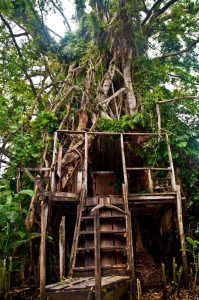
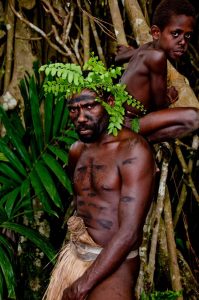
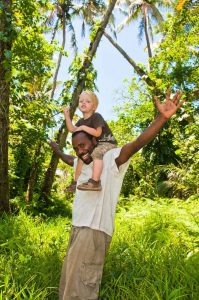
We arrived at the Jungle Oasis jungle camp in Tanna Island after months of rain at the end of the rainy season. The tree house we had booked needed som repair but after three nights in a jungle hut on the ground we stayed in the tree house the next night. The room is actually inside the tree (as opposed to some other tree houses where the room is attached to the outside of the trunk).
7: Shreenath Palace, Jaisalmer, Rajastan, India, 2003

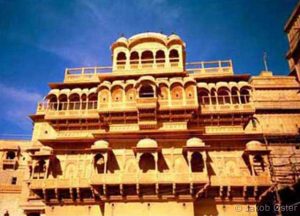
Half hotel – half family homestay. Shreenath Palace is a Haveli – a traditional Indian town house or mansion. This Haveli is located inside the Old Fort district of the adventurous desert town of Jaisalmer. Staying there is like living inside a museum. To go to the toilet at night we needed to go down the stairs and then pass the son and grandmother of the family who owned the house and slept in the same bed near the front door. Once outside there was a toilet at the back of the building. From the room we had a spectacular view of the Jain temples of the old town.
6: Wooden shack, outside Masai Mara NP, Kenya, 2006
In Nairobi I had bought the cheapest possible ‘Camping Safari’ in Masai Mara. My ‘tent’ turned out to be a dilapidated wooden shack. Lit by just one light bulb with no switch and hanging so high that I couldnt unscrew it. Light was on when the generator was running. The first night they forgot to turn of the generator so hundreds of mosquitos were attracted to the light inside the semi open hut throughout the hot and humid night. Needless to say no mosquito net was supplied. The next night there was no electricity since the genearator had run out of fuel the night before..The safari was great though (and the trip was very cheap!).
5: Monastery, Mount Emei, China
Climbing Mount Emei in 1996 with three friends (2 danes and one swede that I had met in Beijing) we simply knocked on the gate to one of the monasteries situated on Mount Emei (Emeishan) and were allowed to spend the night.
4: Tent Safari – Serengeti and Okavango
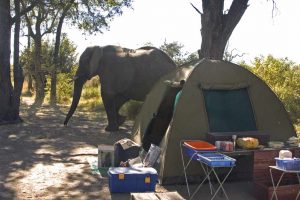
In Serengeti in Tanzania I stayed in a non-fenced camp site. Kitchens are fenced to keep out the wild animals – campsite is not. When we arrived two lions were fornicating in the tall grass right next to the entrance of the camp. Leaving the tent and going to the bathroom at night felt a little scary. I had a similar experience plus wild elephants in the camp at the Moremi NP adjacent to the Okavango Delta in Botswana
3: Rising Phoenix Magic Beach Resort, Accra Ghana
Not exactly a ‘Beach resort’ but a place with a LOT of character. A bar/restaurant/hotel smack on the cliffs facing th Gulf of Guinea. Rastamen smoke ganja all day in front of the restaurants and on friday and saturday nights the bar and dance floor comes alive. Behind a locked door lies 6 rooms right on the cliffs (no direct beach access but great views). This place get a lot of bad reports on Trip Advisor – but for me it was a fun and friendly place.
2: Family stay with the horse nomads in Bokonbaevo, Kyrgyzstan (family trip, 2014)

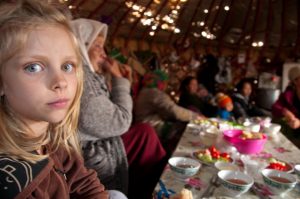
In the Kyrgyz summers horse nomads go on Jailoo – “summer camp” in the mountains. They move their yurts up at around 3.000 meters altitude where they find fresh grass for their horses and cattle. With our kids – then aged 4 and 7 – we stayed for a couple of days with the 6 nomadic families. No-one spoke a word of English so we could only communicate via my very limited Russian (+ Russian app on smartphone) and even more limited Kyrgyz. We had our own “sleeping yurt” and shared all meals with the nomads in the “eating yurt”. For the kids it was like a farmhouse holiday learning how the nomads produced Cheese, Yoghurt and fermented milk after milking their horses and cows.
1: Camping with the Mursi tribe, Omo Valley, Ethiopia (family trip, 2015)

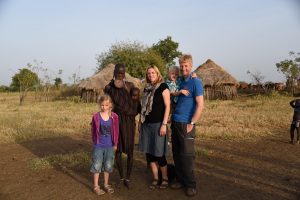
Stayed with Charlotte and the kids (then aged 8 and 5) a week in a remote Mursi village in the Omo valley of southern Ethiopia. We camped next to their thatched huts. By day we played with the mursi children (bringing western toys such as frisbees and water guns) and talked to the women while the shepherd men were in the field with the cattle. We witnessed four ceremonies: wedding, name giving, jugular vein (a bull is shot in the neck with an arrow to take some of it’s blood – and a boy then has to drink the warm blood) and the “Donga”. Donga is the secret and illegal stick fighting ceremony between different Mursi tribes. We found this deep in the bush after 3 days of searching for it. After about an hour we ended up being chased away from it by angry Mursi men who demanded (more) money.
